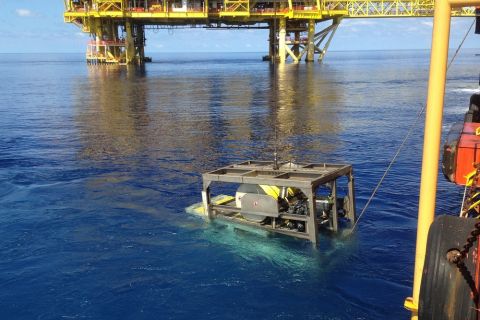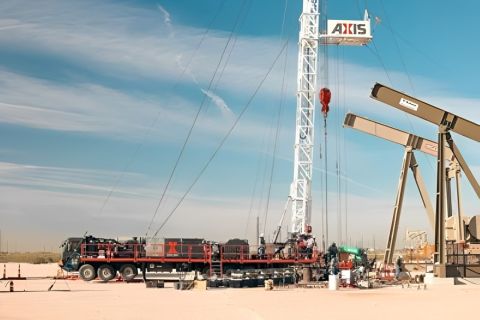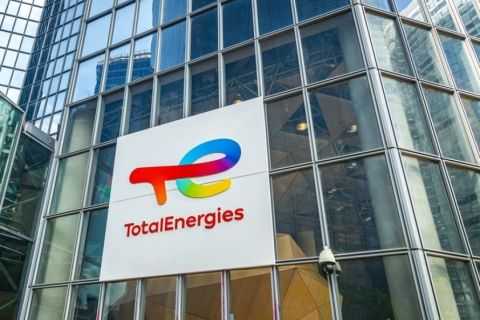West Africa’s presalt Kwanza Basin continues to reveal its reaches, with Cobalt International Energy confirming the largest oil discovery found to date in the frontier deepwater basin, and adding further momentum to its initial development plans for a leased FPSO.
With the U.S. independent putting post-drill resource range estimates for its Orca find (formerly the Baleia prospect) offshore Angola at between 400 MMbbl and 700 MMbbl of oil, this is a significant discovery for Cobalt and its partners Sonangol P&P and BP in Block 20. The next step for Orca will be an appraisal well early next year, says Cobalt.
The results of the drillstem test on Orca-1 were impressive, with the well successfully testing at a facility-constrained rate of 3,700 bbl/d of oil and 16.3 MMcf/d of gas, with minimal drawdown (about 1%) in the upper Sag section of the discovery.
The results confirm the well is capable of substantial sustained oil production rates, Cobalt said. The well was drilled using Petroserv’s SSV Catarina rig to a measured depth of 3,872 m (12,703 ft) and encountered approximately 76 m (250 ft) of net oil pay predominantly in the upper Sag interval. Results of an extensive logging, coring and fluid acquisition program in addition to the test confirm what it says is “a significant discovery”.
The operator is currently drilling the Cameia-3 well in Block 21, with first oil on that field (it’s so-called Cameia Mound Development Project) anticipated by Cobalt for 2017, assuming project sanction later this year, with other nearby finds also including Mavinga. A leased FPSO with subsea wells has previously been presented by Cobalt as the likely solution there.
Last year Cobalt’s Lontra-1 well around 25 km away from Orca flowed at 2,500 bbl/d of condensate and 39 MMcf/d of gas after hitting 75 m (250 ft) of net pay (see DI, 23 December 2013, page 5).
Lontra and Orca might end up being developed in a phased approach separately from Cameia, DI hears, with a leased FPSO and subsea wells the likely production solution, similar to that being studied (but not yet confirmed) for Cameia. However, with rising cost inflation concerns on projects generally, there may be lower-cost options on the table, depending on the floater’s chosen location. If central enough, both fields could be tied back directly to the initial Cameia FPSO, with the tieback distances estimated at up to 50 km to 60 km.
Orca-1 was Cobalt’s fifth deepwater presalt discovery offshore Angola, and targeted a prospect previously penetrated by the Baleia-1A well back in 1996—however, that well was not tested and was subsequently abandoned. The Baleia-1A well is about 5 km from Orca-1. Cobalt has a 40% working interest in Block 20, with Sonangol P&P and BP each holding 30%.
Joseph H. Bryant, Cobalt’s CEO, described the flow capacity of the Orca reservoir as “extraordinary” and added that it gave the company confidence that wells in the field will flow oil at rates equal to or greater than the rates it expects from its Cameia Field.
“In addition, our drilling operations continue to improve, and our understanding of the Kwanza Basin reservoir systems has greatly improved by the extensive testing program that we carried out on this well. The excellent reservoir quality we encountered at Orca has positive implications on the rest of Cobalt’s vast Kwanza Basin portfolio, including our five discovered fields as well as our exploration prospects we have yet to drill,” he added.
- Cobalt also confirmed that Angola’s Ministry of Petroleum has granted it and its partners a two-year extension of a licence for Block 9. Once operations are completed on Cameia-3, Cobalt will start drilling the Loengo-1 wildcat in that block.
Recommended Reading
StimStixx, Hunting Titan Partner on Well Perforation, Acidizing
2024-02-07 - The strategic partnership between StimStixx Technologies and Hunting Titan will increase well treatments and reduce costs, the companies said.
Forum Energy Signs MOU to Develop Electric ROV Thrusters
2024-03-13 - The electric thrusters for ROV systems will undergo extensive tests by Forum Energy Technologies and SAFEEN Survey & Subsea Services.
Axis Energy Deploys Fully Electric Well Service Rig
2024-03-13 - Axis Energy Services’ EPIC RIG has the ability to run on grid power for reduced emissions and increased fuel flexibility.
TotalEnergies Rolling Out Copilot for Microsoft 365
2024-02-27 - TotalEnergies’ rollout is part of the company’s digital transformation and is intended to help employees solve problems more efficiently.
Curtiss-Wright to Deploy Subsea System at Petrobras' Campos Field
2024-02-12 - Curtiss-Wright and Petrobras will combine capabilities to deploy a subsea canned motor boosting system at a Petrobras production field in the Campos Basin.





